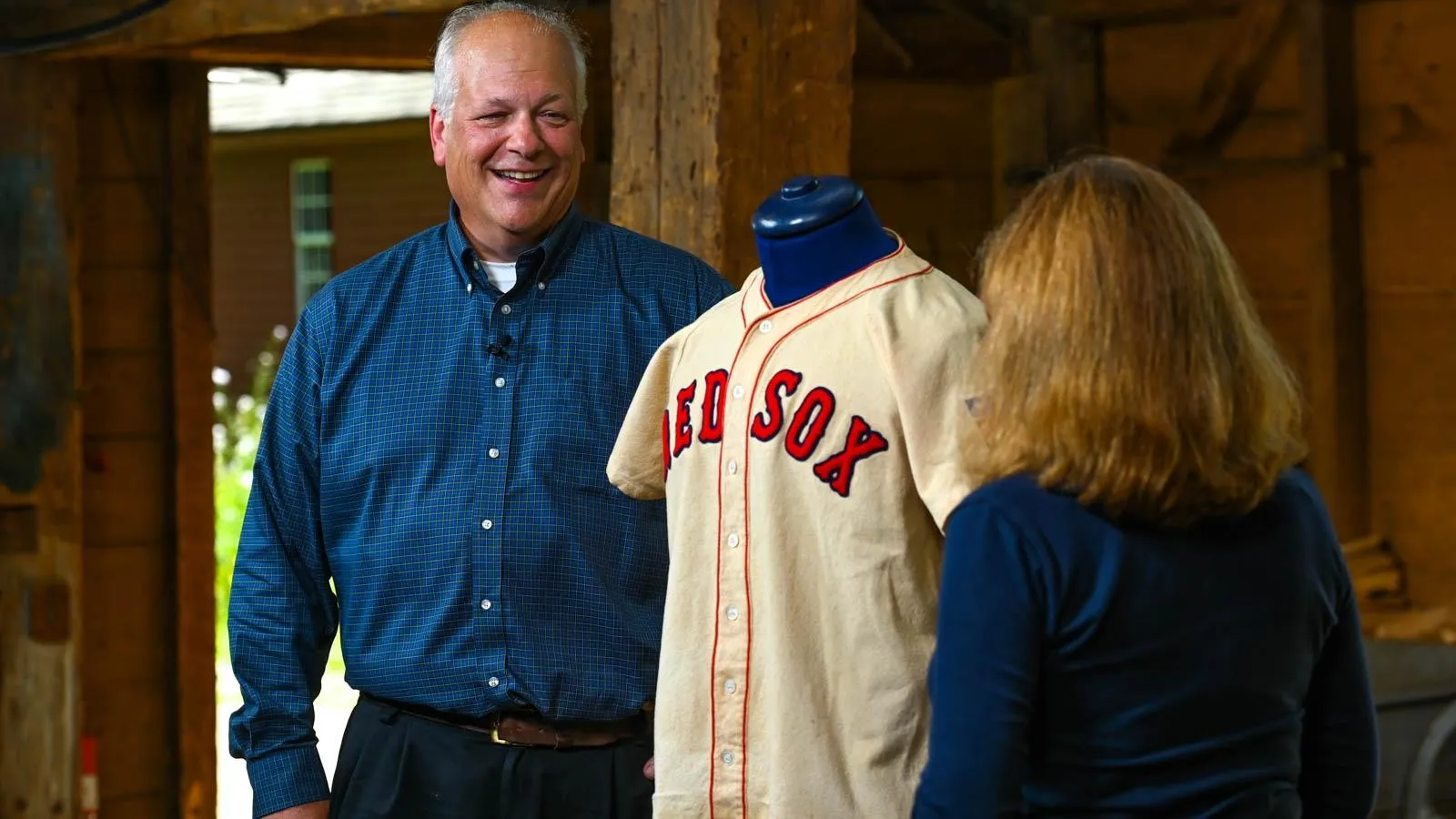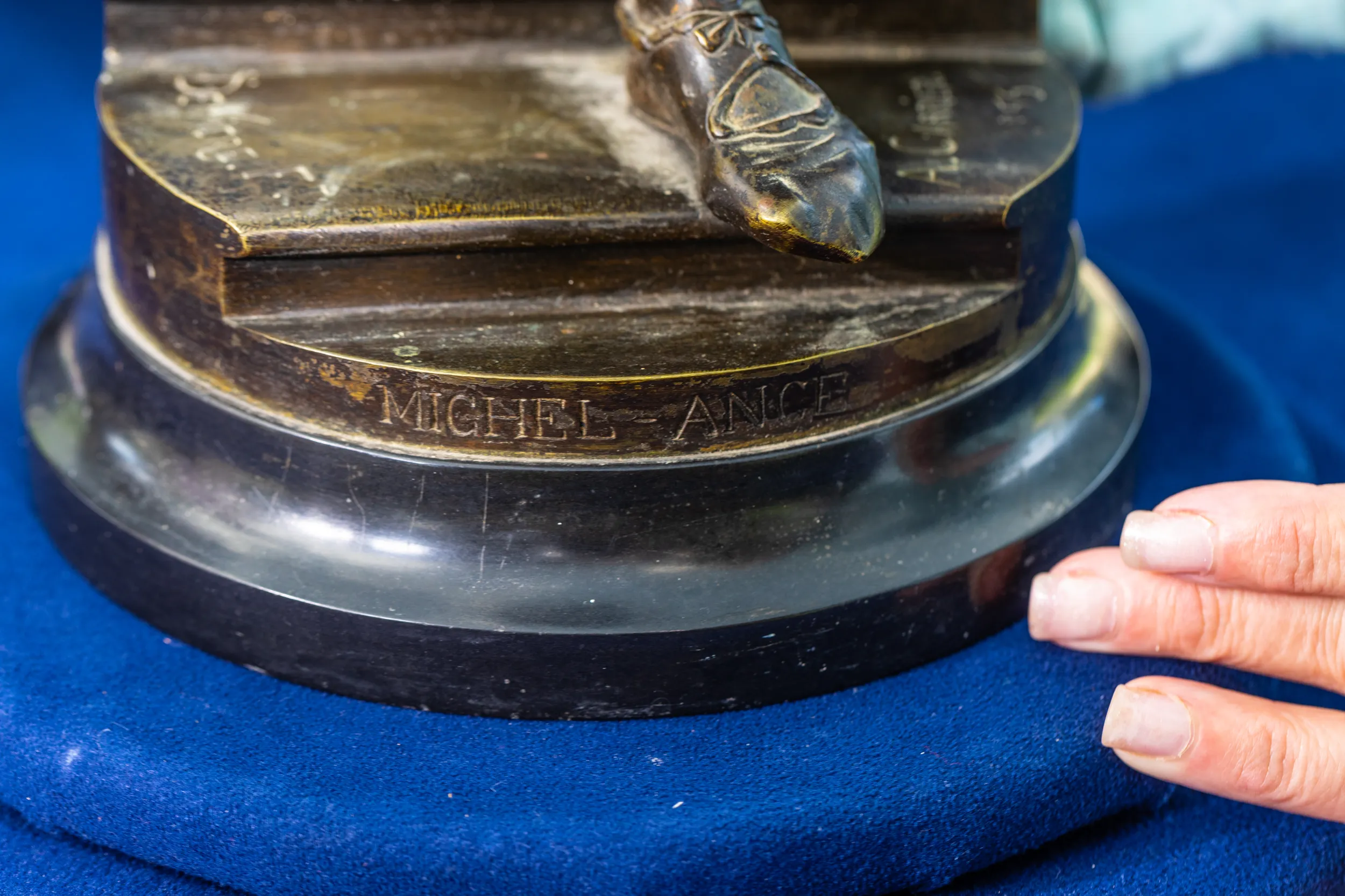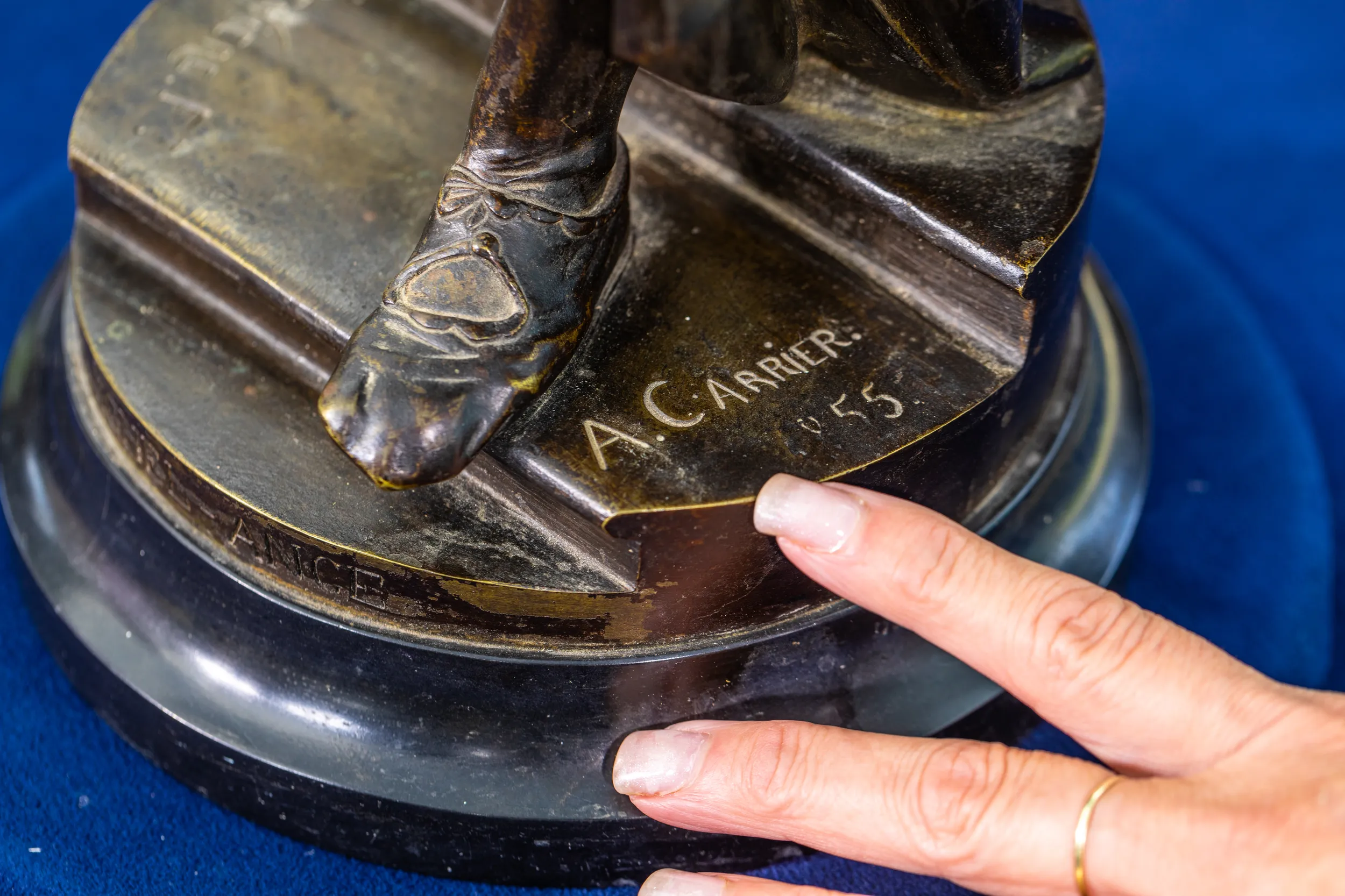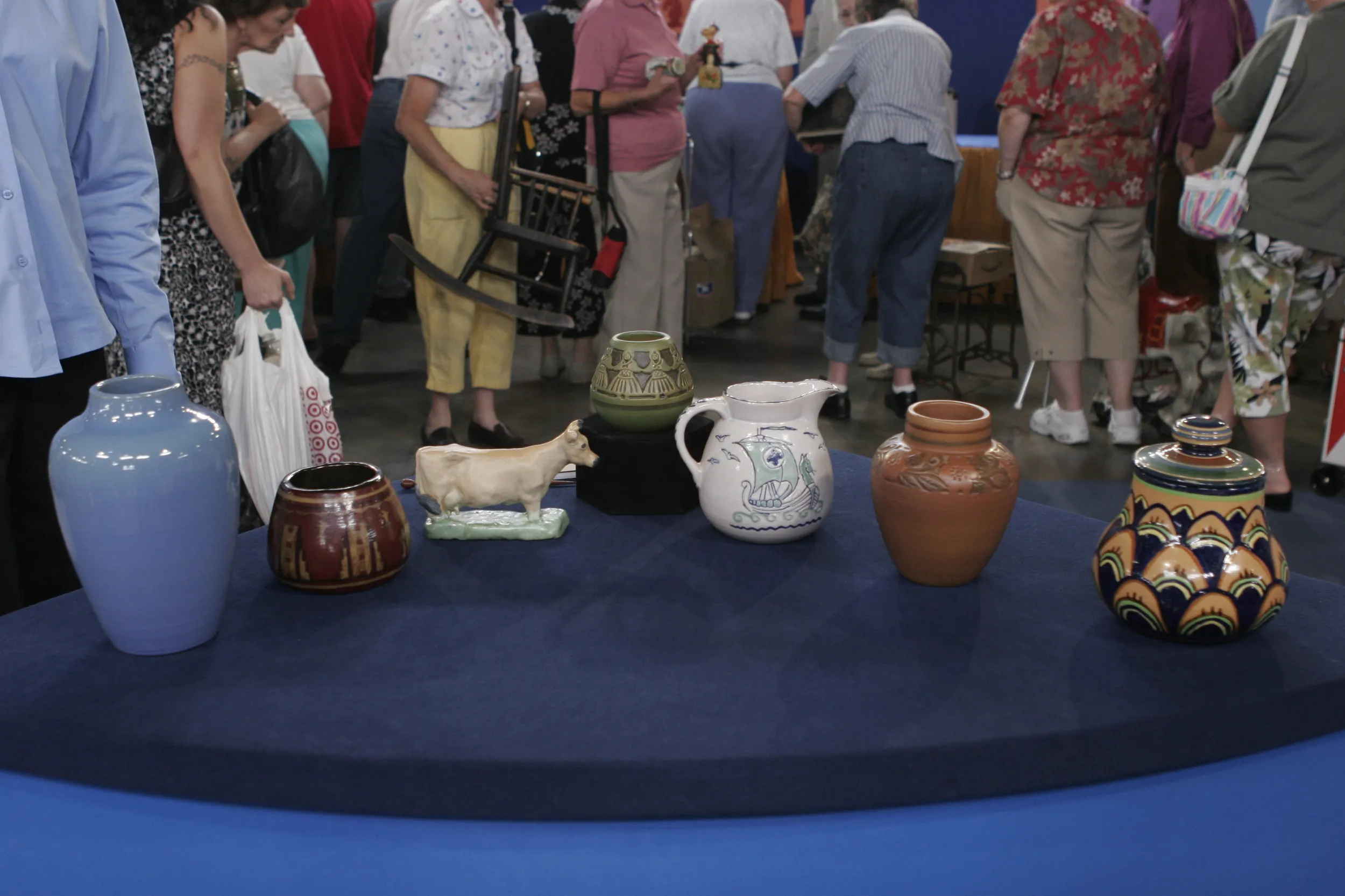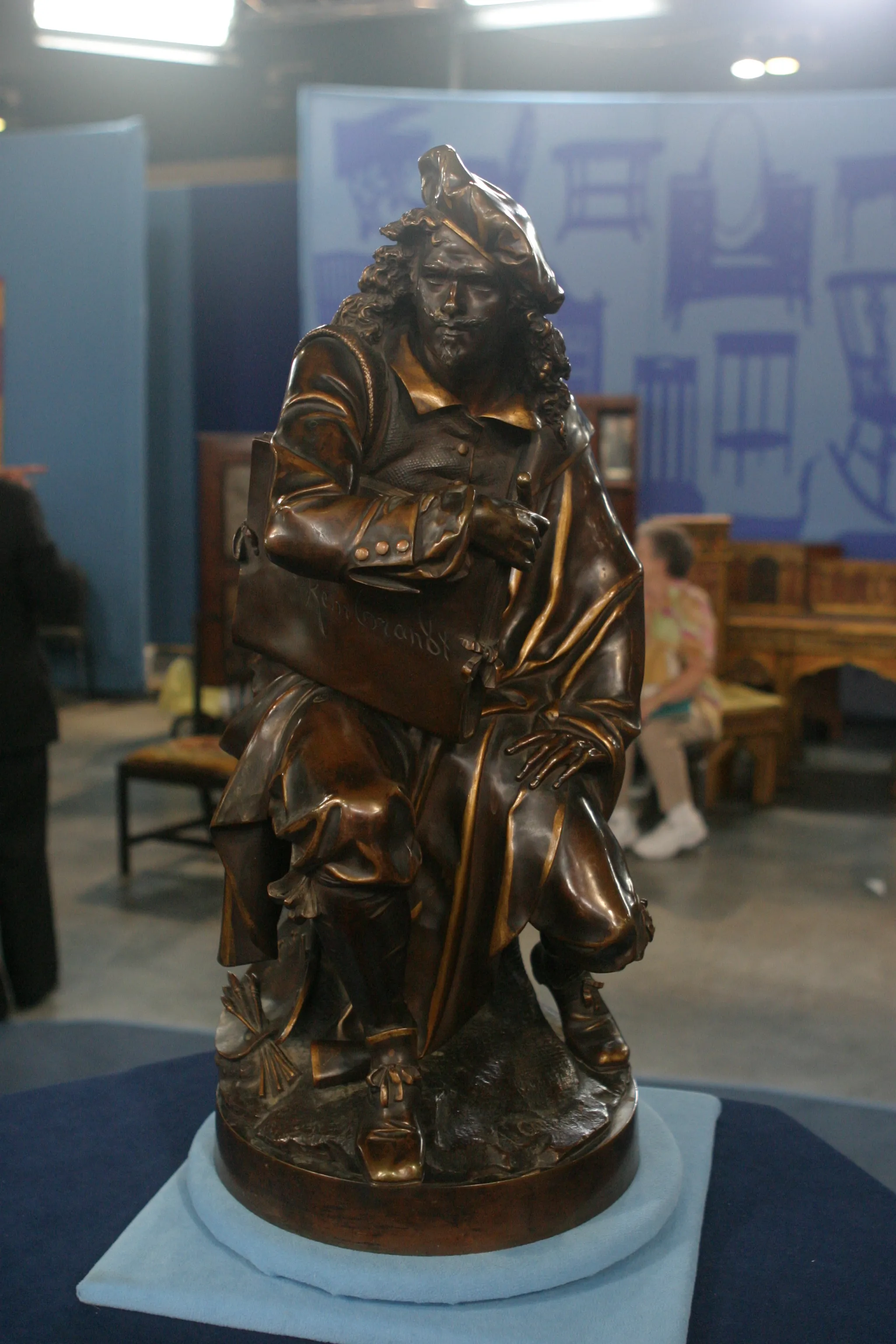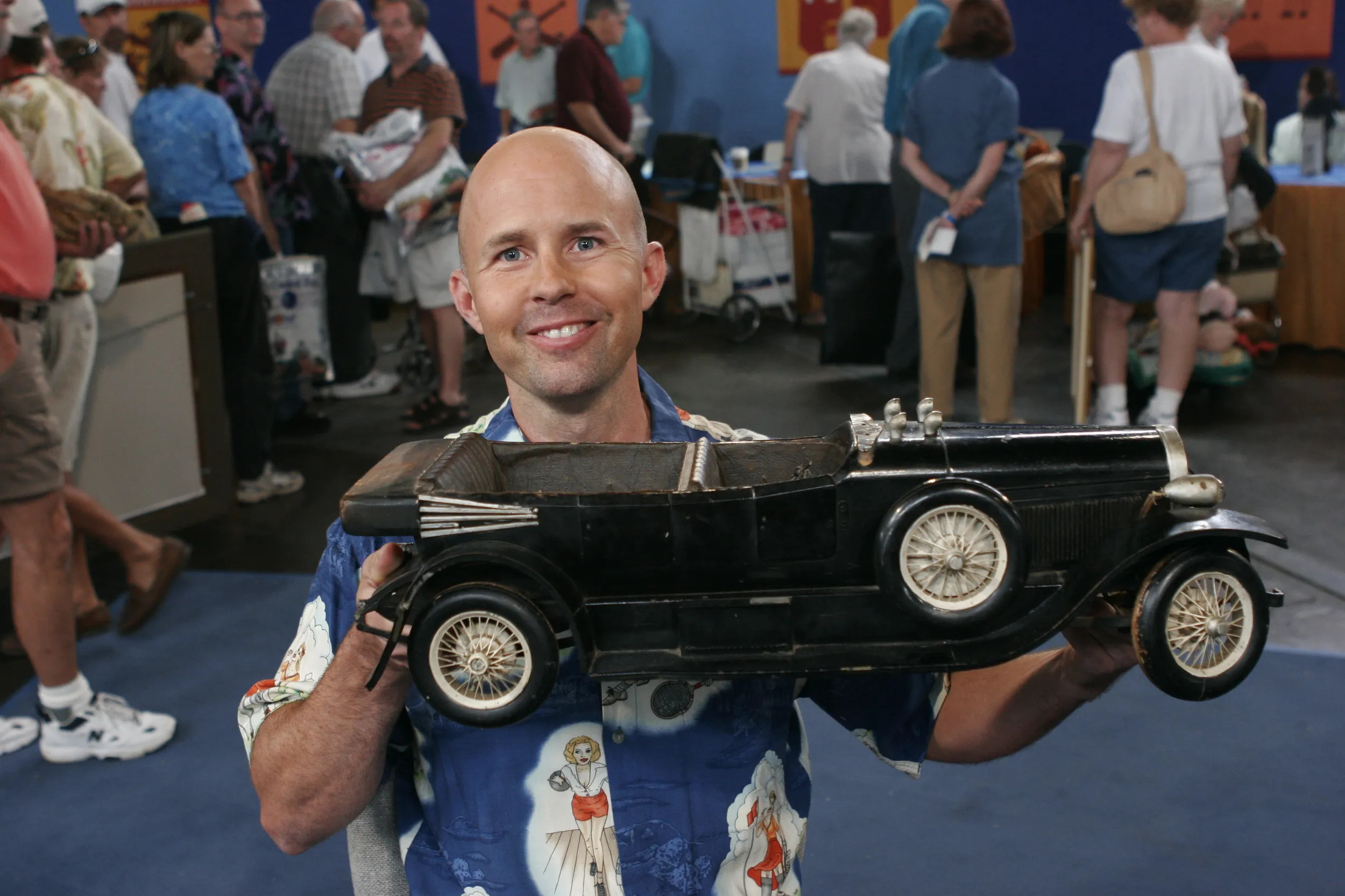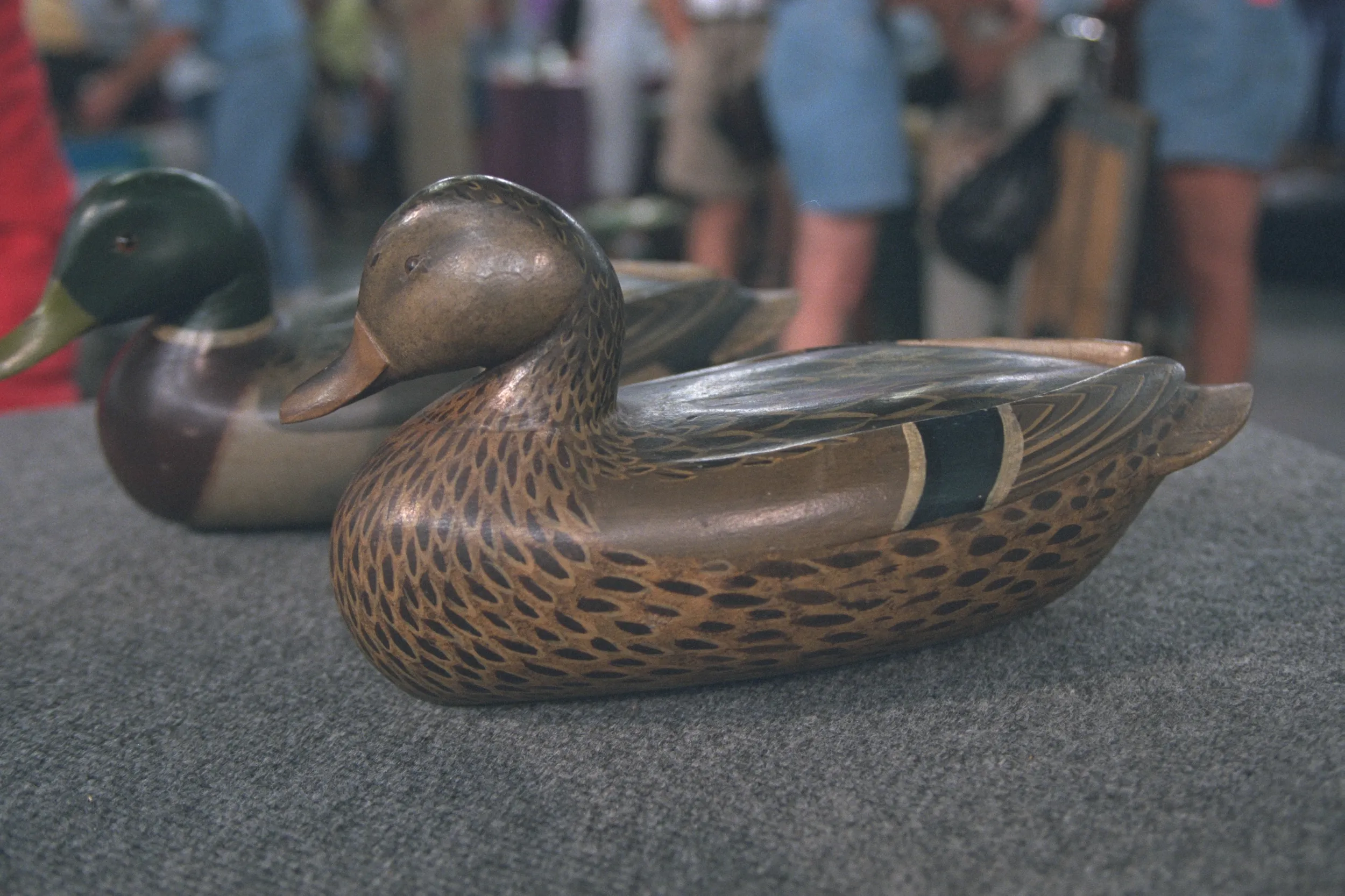GUEST: Well, my grandfather owned a moving business in Springfield, and he probably acquired 'em in the '50s. Someone couldn't pay their storage and moving bill, so he said, "Do you want these?" And my grandfather said, "Yes."
APPRAISER: Mm-hmm.
GUEST: And brought 'em home to my grandmother. And that's where they've been ever since. And that's everything that I know about 'em, except they're very heavy. They were just sitting on the fireplace in, you know, in the room with the couch that nobody ever went into. (laughs)
APPRAISER: (chuckles) Uh, they're two wonderful sculptures, and they're signed "A. Carrier," Albert Carrier. But he, later in his career, he used his, uh, family name, Carrier-Belleuse, so he's sometimes called Carrier-Belleuse.
GUEST: Mm-hmm.
APPRAISER: And he was born in 1824. And he had a classical French, uh, academic training at the École des Beaux-Arts. And he was very, very successful as a, uh, as a sculptor in many, many public commissions. He's particularly interesting because, uh, for a while, he worked in England at the Minton's, uh, Works, and he designed porcelain for Minton's. And later in his career, he was actually the artistic director of Sèvres. Uh, he was there for a number of years, and he actually died in, in, in Sèvres.
GUEST: Okay.
APPRAISER: And he was a really leading artist of his day. He did a var, a series of sculptures, and these are two rather famous people from the Renaissance. Here we have Michelangelo, and here we have Raphael. I like Michelangelo here. He's holding this little sculpture, and Raphael has his pen or pencil ready. What's particularly nice about these is, they're from the mid-19th century. And the French at that time were f, fabulous casters, uh, of bronze. So the, the casting was incredible. These also had to be finished, they had to be filed, they had to be chased, uh, when they came, they're pretty rough when they came out of the mold, and then they had to have a patina put on it. And what's really amazing about your pieces is, they have the original patina. Nothing's been happened, they're not rubbed, they're not, nothing's broken. So they're really in quite, quite good condition. Again, the detailing is, is spectacular. All the small details here, uh, and right down to the shoes, these wonderful little pointy shoes. They're really quite lovely. Uh, and again, the quality, the condition is just superb. So, hopefully, the only thing you do is dust them off?
GUEST (chuckling): I just wiped 'em down with a paper towel last night, 'cause they were sitting in the same spot for 15 years. (laughing)
APPRAISER (laughs): And have you ever had them valued?
GUEST: Never.
APPRAISER: Mm-hmm.
GUEST: They've just been the two statues.
APPRAISER: They're really wonderful examples. They're, they're sort of the best quality of French sculpture in the middle part of the 19th century. Unfortunately, it's not a particularly popular collecting field. So even though, um, uh, Carrier-Belleuse was one of the absolute leading, um, sculptor of his period, and one of his claims to fame is that Auguste Rodin...
GUEST: Okay.
APPRAISER: ...was his assistant...
GUEST: Ooh.
APPRAISER: ...for about six years.
GUEST: Okay.
APPRAISER: So, that's, that's given him the visibility. In terms of the value, at retail or for insurance purposes, for the pair of these, in the $10,000 to $12,000 range.
GUEST: Wow.
APPRAISER: (laughs)
GUEST (laughing): That's great. They're gonna be passed down to my daughter. She has a fireplace to keep 'em on. (laughs)
GUEST: And does she like them?
APPRAISER: She's never seen 'em, and so it'll be a surprise. (laughs) She lives in a very old house, and she's very old-soul, and it, it'll be perfect.

